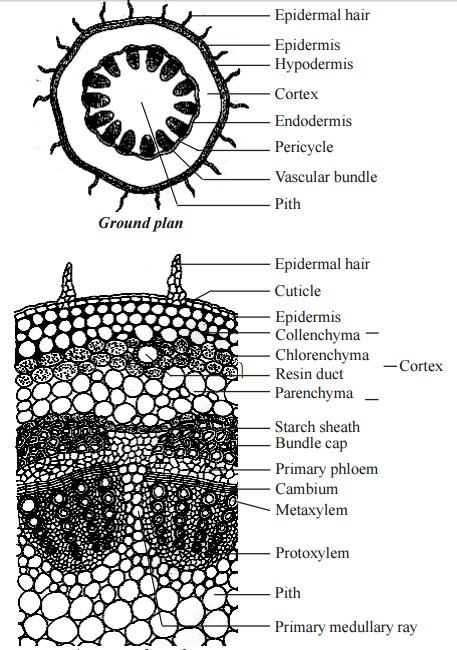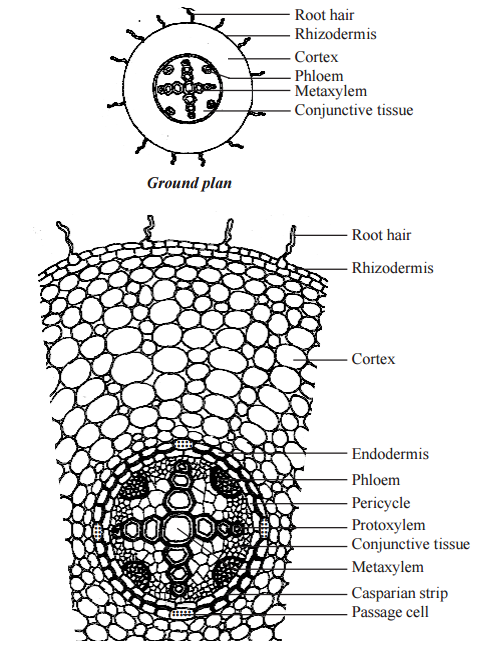Mutation
Mutation and classification of mutations
In a species, variations are caused by changes in the environment or any changes in the innate genetic setup of an organism or by the combination of both.
Sudden change in the genetical set up of an organism is defined as mutation.
In 1901, Hugo de Vries first used the term mutation based on his observation on Oenothera lamarckiana.
Charles Darwin termed these sudden change as ‘sports’. According to Bateson, mutation is a discontinuous change.
Based on molecular basis of heredity, mutations is defined as sudden change in the sequence of nucleotides of gene.
The mutation brings about a change in the organism. The organism which undergoes mutation, is called a mutant.
eg. Oenothera lamarckiana.
Mutations that affect the biochemical reactions are called biochemical mutations.
For example, biochemical mutants of Neurospora failed to synthesize certain amino acids.
Some mutations drastically influence the genes and cause death to the individual.
Such mutations are described as lethal mutation.
For example, in the plant Sorghum, recessive mutant fails to produce chlorophyll and therefore they die in the seedling stage.
Thus, most of the mutations are harmful, because they disturb the genic balance of the organism.
Although most of the mutations are useless and even harmful, and some of the mutations play a significant role in the evolution of new species.
Many new strains of cultivated crops and new breeds of domesticated animals are the products of gene mutations.
Small seeded Cicer arietinum (bengal gram) suddenly get mutated to large seeded Cicer gigas is the case of gene mutations.
Classification of mutation
Mutations have been classified in various ways based on different criteria.
Depending on the kind of cell in which mutations occur, they are classified into somatic and germinal mutations.
They may be autosomal or sex chromosomal according to their type of chromosome in which they occur.
They may be spontaneous or induced according to their mode of origin.
They may be forward or backward according to their direction.
They may be dominant or recessive according to their phenotypic expression of mutated genes.
Point or gene mutation
Point mutations is sudden change in small segment of DNA either a single nucleotide or a nucleotide pair.
Gross mutations is a change involving more than one or a few nucleotides of a DNA.
The gene mutation may be caused by loss or deletion of a nucleotide pair.
This is called deletion mutations and reported in some bacteriophages.
Addition of one or more nucleotides into a gene results in addition mutations.
Replacement of certain nitrogen bases by another base in the structure of DNA results in substitution mutations.
The deletion and addition mutation alter the nucleotide sequence of genes and ultimately result in the production of defective protein and this leads to the death of the organism.
The substitution mutations can alter the phenotype of the organism and have great genetic significance.
There are two types of substitution mutations – transition and transversion.
When a purine or a pyrimidine is replaced by another purine or pyrimidine respectively this kind of substitution is called transition.
When a mutation involves the replacement of a purine for pyrimidine or viceversa this is called transversion.
For more details about about mutations click here
Other links
STRUCTURE OF CHROMOSOME – CELL BIOLOGY
Types of chromosomes with special types
Linkage and mechanism of linkage
Crossing over, gene mapping and recombination of chromosome
Mutagenic agents and its significance
Structural Chromosomal aberrations
Numerical chromosomal aberrations
Structure of DNA and Function of DNA






















